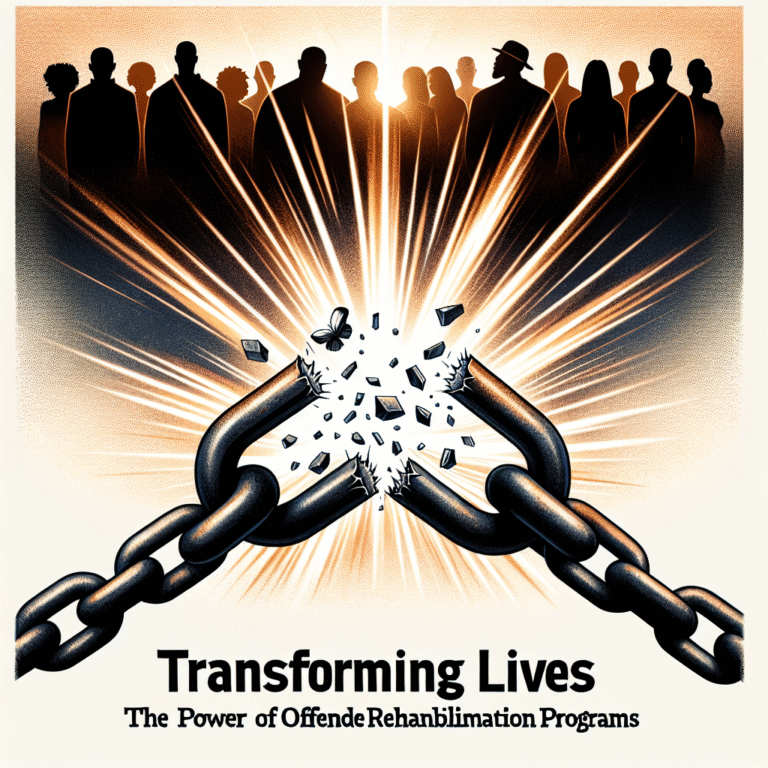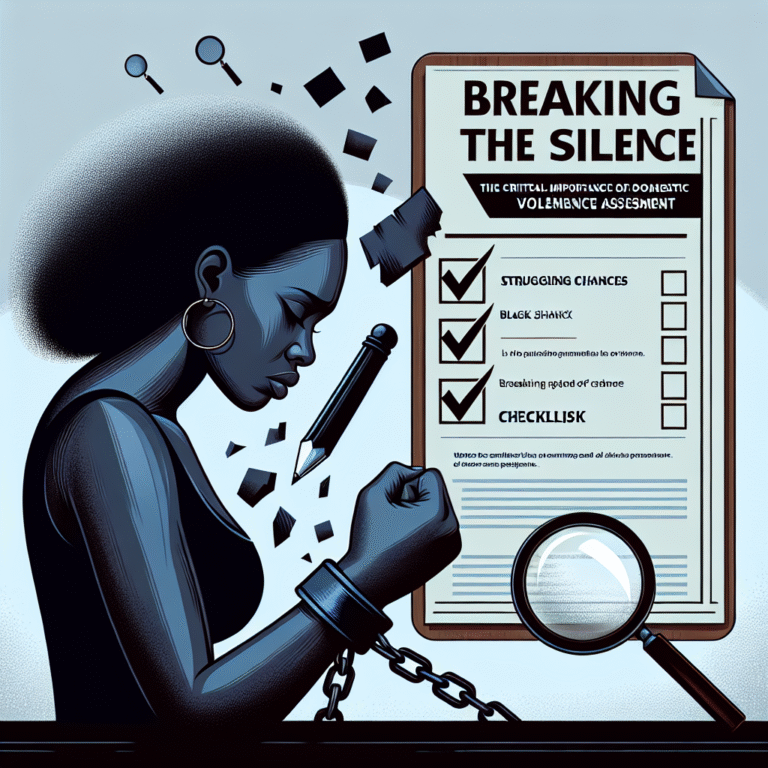
Introduction
When it comes to predicting violent behavior, the stakes couldn’t be higher. From clinical settings to public safety, accurately assessing the risk of violence can mean the difference between safety and tragedy. In the realm of criminal justice and mental health, professionals often find themselves navigating the murky waters of human behavior, seeking tools and techniques that bolster their efforts in making informed decisions. This need for precision and reliability leads us to explore the intricate field of risk appraisal techniques—specifically looking at how we can be "Assessing the Unpredictable: A Deep Dive into Violence Risk Appraisal Techniques."
As the world grapples with increasing levels of violence, understanding how to evaluate and manage this risk is more critical than ever. This article will unpack the various methodologies utilized in violence risk assessment, case studies that illuminate their practical application, and the implications that arise from our attempts to predict human behavior.
Understanding Violence Risk Appraisal Techniques
Violence risk appraisal encompasses various assessment tools and methodologies used by clinicians, law enforcement, and other professionals to evaluate the likelihood of an individual committing a violent act. These appraisal techniques vary widely in their approaches, reflecting the complexity of human behavior. Here, we categorize these tools into three primary groups:
- Structured Professional Judgment (SPJ)
- Actuarial Tools
- Static and Dynamic Risk Factors
Structured Professional Judgment (SPJ)
SPJ combines clinical expertise and systematic evaluation to analyze an individual’s risk factors for violence. Often employed by mental health professionals, SPJ frameworks allow for flexibility while adhering to standardized criteria. These assessments usually encompass both historical and contextual variables, providing a well-rounded view of the individual’s propensity for violence.
Case Study: The HCR-20
The Historical-Clinical-Risk Management-20 (HCR-20) is a widely recognized SPJ tool that evaluates historical, clinical, and risk management factors. In a groundbreaking study examining the effectiveness of HCR-20 in a forensic psychiatric setting, results indicated that areas evaluated by HCR-20 significantly correlated with instances of future violent behavior.
Here’s a table illustrating the HCR-20’s key components:
| Factor | Description |
|---|---|
| Historical Factors | Previous violence, age at first violence, and other past behaviors. |
| Clinical Factors | Mental health history, substance abuse, and interpersonal relationships. |
| Risk Management Factors | Insight into risk management, level of cooperation, and social stability. |
Actuarial Tools
On the other hand, actuarial tools use statistical data to predict potential future violence. These tools apply algorithms to assess risk based on existing data, creating a more formulaic approach compared to SPJ. The appeal of actuarial tools lies in their empirical grounding.
Case Study: The Violence Risk Appraisal Guide (VRAG)
The VRAG is an actuarial tool designed to predict violent recidivism among adult offenders. A study conducted over a decade showed that the VRAG could predict violent behavior with a reliability rate exceeding 80%.
The following table summarizes critical predictive factors assessed by VRAG:
| Factor | Description |
|---|---|
| Criminal History | Number and severity of past offenses. |
| Psychopathy Checklist Score | Level of psychopathic traits exhibited. |
| Age | Age at the time of first conviction. |
Static and Dynamic Risk Factors
Assessing static and dynamic risk factors is crucial for a holistic understanding of violence risk. Static factors are unchangeable, such as past violent behavior or demographic variables. Dynamic factors, however, can change over time—such as substance use or mental health status—providing an opportunity for intervention.
Integrating Risk Appraisal Techniques in Practice
The integration of the various violence risk appraisal techniques into practice presents both challenges and opportunities. Professionals must be aware of the strengths and weaknesses of each approach.
Challenges and Ethical Considerations
One of the significant challenges in assessing violence risk involves the ethical implications of using such techniques. Misinterpretation can lead to unnecessary stigmatization or inappropriate interventions, sometimes impacting legal outcomes. Ensuring that risk assessments remain grounded in evidence and professional judgment is paramount.
Training and Resources
Incorporating these assessment tools requires not only understanding but also ongoing training and skill enhancement. Organizations must invest in professional development to ensure their teams are adequately prepared to utilize these tools effectively.
Effectiveness of Violence Risk Appraisal Techniques
Evaluating the effectiveness of violence risk appraisal techniques is essential. Various studies have indicated that when properly applied, these techniques can dramatically reduce instances of violence, thereby benefiting both individuals and society.
Case Study: The Risk Assessment and Intervention Program
A notable initiative focused on violence risk assessment is the Risk Assessment and Intervention Program (RAIP), implemented in various correctional facilities. By utilizing a combination of SPJ and actuarial tools, RAIP reports a reduction of violent incidents by over 30%.
The program exemplifies the advantages of blended techniques and reflects the need for interdisciplinary collaboration to leverage diverse expertise in risk assessment.
Future Directions: Innovations in Violence Risk Appraisal
As we continue to explore "Assessing the Unpredictable: A Deep Dive into Violence Risk Appraisal Techniques," the future of these tools appears promising yet complex. Technological advancements in artificial intelligence and machine learning are beginning to influence risk assessment practices.
Machine Learning and AI
Emerging technologies are capable of analyzing vast datasets to identify risk patterns previously unfathomable. However, ethical complications arise, suggesting caution in relying solely on automated assessments without human oversight.
Conclusion
Assessing violence risk is a challenging yet crucial endeavor for mental health professionals, law enforcement, and forensic experts. By utilizing techniques such as SPJ, actuarial tools, and an understanding of both static and dynamic factors, practitioners can better navigate the complexities of human behavior.
In our quest for “Assessing the Unpredictable: A Deep Dive into Violence Risk Appraisal Techniques,” we aim not only to understand the mechanisms of violence risk assessment but also to inspire actionable insights that can lead to safer communities.
Actionable Insights
Collaborate Across Disciplines: Encourage structured cooperation between mental health professionals, law enforcement, and legal experts to enhance risk assessment processes.
Invest in Training: Stay abreast of the latest advancements in violence risk appraisal techniques through continuous education and training.
- Embrace Technology Wisely: Leverage emerging technologies while emphasizing ethical considerations, ensuring human oversight remains integral to assessment processes.
FAQs about Violence Risk Appraisal Techniques
1. What are violence risk appraisal techniques?
Violence risk appraisal techniques are systematic methods used to evaluate the potential for an individual to commit violent acts.
2. How does Structured Professional Judgment differ from actuarial tools?
SPJ incorporates clinical expertise along with structured assessments, while actuarial tools use statistical data to generate predictions.
3. Are violence risk assessments always accurate?
No, while these assessments provide frameworks for risk evaluation, human behavior is inherently unpredictable. Assessments are best used as tools for informed decision-making rather than definitive conclusions.
4. Can violence risk assessments be misused?
Yes, there is an ethical risk of misinterpretation of results, which may lead to stigmatization or wrongful interventions. Proper training and ethical guidelines are imperative.
5. How can technology improve violence risk assessment outcomes?
Emerging technologies such as AI can analyze large datasets to reveal patterns that assist in risk prediction, but they should complement, not replace, human judgment.
By engaging with "Assessing the Unpredictable: A Deep Dive into Violence Risk Appraisal Techniques," we open a dialogue on how best to utilize these vital tools for safer, more informed decision-making in the realm of violence prevention.

















